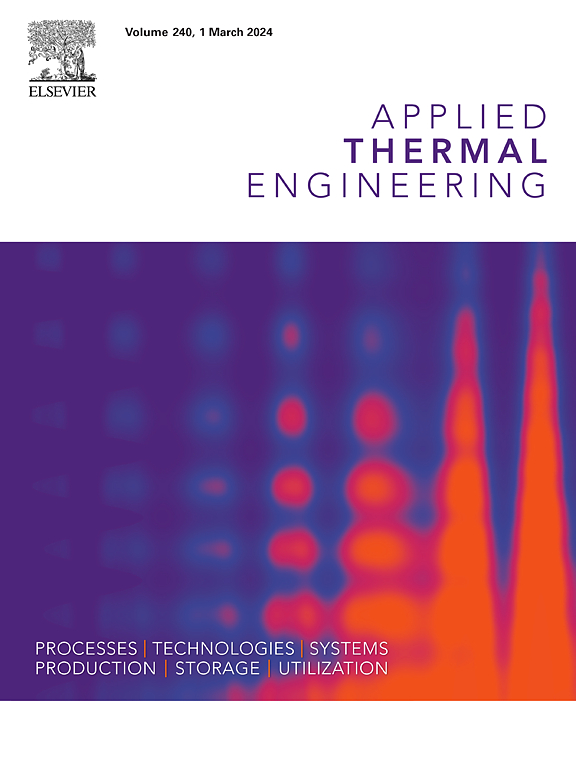Bio-inspired volute disk for performance enhancement of metal hydride reactor coupled with nanoparticles enhanced phase change material
IF 6.1
2区 工程技术
Q2 ENERGY & FUELS
引用次数: 0
Abstract
Metal hydride is widely recognized as the efficiently method to storage H2 due to its saving energy, safety, low cost and high H2 storage capacity. However, heat transfer has always been the key limiting factor in the application of metal hydride H2 storage reactors. A novel bionic volute disk reactor was proposed to effectively enhance heat transfer performance and accordingly accelerate H2 storage efficiency. Additionally, the excellent stable scalability characteristics of volute structure can satisfy the diverse requirements for H2 storage capacity in various application scenarios. Meanwhile, phase change material and nanoparticles were introduced to considerably improve heat transfer and H2 storage efficiency at minimizing heat management during application. The reaction performances were investigated and optimized using 3D models, and the results illustrated that bionic volute disk reactor can improve hydrogenation efficiency by 40 % and dehydrogenation efficiency by 27 % compared to traditional planar spiral disk reactor. Meanwhile, the structural parameter investigations indicated that bionic volute disk reactor could achieve optimal performance with spiral turns of 3.5, tube diameter of 8 mm and spiral end radius of 40 mm. Moreover, the quality sensitivity analysis revealed the exceptionally stable scalability of bionic volute disk reactor can be achieved by adjusting tube length and layer count without compromising reaction performance. Furthermore, adding 20 % nanoparticles can increase the heat transfer rate by 19 % during absorption and 21 % during desorption, demonstrating an improvement in heat transfer characteristics and an enhancement of rapid response performance.

求助全文
约1分钟内获得全文
求助全文
来源期刊

Applied Thermal Engineering
工程技术-工程:机械
CiteScore
11.30
自引率
15.60%
发文量
1474
审稿时长
57 days
期刊介绍:
Applied Thermal Engineering disseminates novel research related to the design, development and demonstration of components, devices, equipment, technologies and systems involving thermal processes for the production, storage, utilization and conservation of energy, with a focus on engineering application.
The journal publishes high-quality and high-impact Original Research Articles, Review Articles, Short Communications and Letters to the Editor on cutting-edge innovations in research, and recent advances or issues of interest to the thermal engineering community.
 求助内容:
求助内容: 应助结果提醒方式:
应助结果提醒方式:


